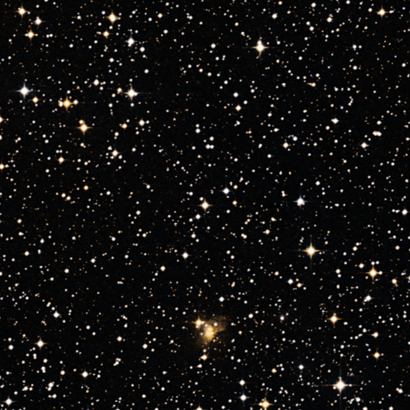A new star is known: CoRoT-7. It is one of the 100,000 stars that were recorded by the COROT satellite in 1,000 days since the December 27, 2006 launch date. Congratulations!

Date: 16 Sep 2009
Depicts: Star field around CoRoT 7
Copyright: ESO/Digitized Sky Survey
The star CoRoT-7 lives far away at around 500 light-years towards the constellation of Monoceros or the Unicorn. Younger than the closest star to us, the Sun, by about 3 billion years, CoRoT-7 has two planets. Both planets have masses in the super-Earth category. CoRoT-7c, like its sister CoRoT-7b, might consist of either rocks or a mixture of water and rocks.
The best-known star to us is also our own Sun. The life of the Sun from its birth to a white dwarf is depicted in the chart below. The final stage as a black dwarf is not known enough to be included in the time scale. CoRoT-7 is expected to follow a similar path as its sister star (the Sun) and become a red giant in about 8.5 billion years from now.

Credit: Tablizer (CC-BY-SA 2.5)
Our Sun is a dwarf star with a spectral classification of G2V. Cooler than the Sun, CoRoT-7 is classified as G9V in its discovery paper. Hence, in the simplified version of Hertzsprung-Russell Diagram, shown below, both stars lie in the Main Sequence but CoRoT-7 to the right, the cooler side of the Sun.

Credit: GFDL
Though slightly smaller than our Sun, CoRoT-7 is in the same luminosity class V as the Sun. Furthermore, according to the current star classification system, the Morgan-Keenan, while the Sun is interpreted as "a yellow two tenths towards orange main sequence star", CoRoT-7 is "a yellow nine tenths towards orange main sequence star". An almost orange but still yellow dwarf in the family of stars!








Comments